Owen, George (1877-1959) USA
Yves GARY Hits: 7674
Category: DESIGNERS
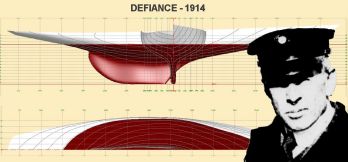 George Owen was born in Cambridge, Massachusetts in 1877. His mother died when he was young. After this loss, Owen was drawn closer to family in Rhode Island. The Owen family was active in yachting and commissioned boats from both Edward Burgess, and Herreshoff Manufacturing Company, Bristol, Rhode Island. In addition to many opportunities to race fast fine boats, Owen also began developing hobbies such as photography.
George Owen was born in Cambridge, Massachusetts in 1877. His mother died when he was young. After this loss, Owen was drawn closer to family in Rhode Island. The Owen family was active in yachting and commissioned boats from both Edward Burgess, and Herreshoff Manufacturing Company, Bristol, Rhode Island. In addition to many opportunities to race fast fine boats, Owen also began developing hobbies such as photography.
The rare, 1888 photograph of N. G. Herreshoff and Lucian Shape in Clara’s cabin, published in Herresshoff of Bristol (Bray and Pinhero, WoodenBoat Publications, 1989), was taken by Owen.
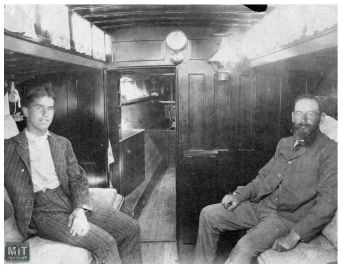 In 1890, after completing high school in Rhode Island, Owen enrolled at MIT. In the late 1880s, MIT’s Department Mechanical Engineering began offering courses in naval architecture and marine engineering. Although Owen took many of the courses offered in marine engineering and naval architecture, a degree in naval architecture was not available until 1897. He graduated in 1894 with a degree Mechanical Engineering. The title of his senior thesis (co-authored with Austin Sperry) was Comparison between Automatic and Hand Stoking on a Galloway Boiler.
In 1890, after completing high school in Rhode Island, Owen enrolled at MIT. In the late 1880s, MIT’s Department Mechanical Engineering began offering courses in naval architecture and marine engineering. Although Owen took many of the courses offered in marine engineering and naval architecture, a degree in naval architecture was not available until 1897. He graduated in 1894 with a degree Mechanical Engineering. The title of his senior thesis (co-authored with Austin Sperry) was Comparison between Automatic and Hand Stoking on a Galloway Boiler.
Owen’s first job out of college was as a draftsman at Pacific Textile Mills in Lawrence, Massachusetts. Between 1898 and 1901 he worked in the drafting department of Herreshoff Manufacturing Company. In addition to routine drafting, Owen worked on calculating hull weights for America’s Cup aspirant Constitution.
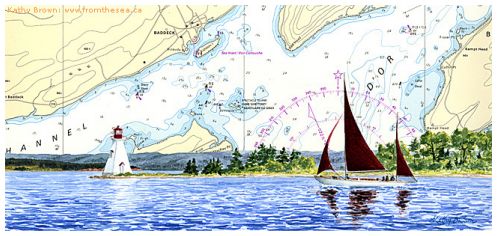 About 1901, Owen, with his new wife Florence Wood, moved to Canada and took an engineering position with Hamilton Iron and Steel Company in Hamilton, Ontario.
About 1901, Owen, with his new wife Florence Wood, moved to Canada and took an engineering position with Hamilton Iron and Steel Company in Hamilton, Ontario. 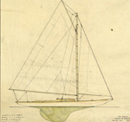 This move was a key turning point in his life as it marked the beginning of Owen’s yacht design career and the initiation of enduring connections with Canadian yachting. Owen’s early designs were developed on his own time while he worked as a full-time engineer. His third design, WHIRL was a 20-foot Restricted class of YRA Lake Ontario. From 1902 through 1903, Owen won 29 out of 30 races in his WHIRL. This is the first concrete evidence that Owen had developed exceptional yachting skills as a young man.
This move was a key turning point in his life as it marked the beginning of Owen’s yacht design career and the initiation of enduring connections with Canadian yachting. Owen’s early designs were developed on his own time while he worked as a full-time engineer. His third design, WHIRL was a 20-foot Restricted class of YRA Lake Ontario. From 1902 through 1903, Owen won 29 out of 30 races in his WHIRL. This is the first concrete evidence that Owen had developed exceptional yachting skills as a young man.
 After completing approximately six designs in Canada, Owen moved back to Massachusetts in 1904 to take a position in the design department of the Fore River Shipyard. At the time, the American yachting world was in transition. Designers were experimenting with N. G. Herreshoff’s new Universal Rule yacht measurement formula, a specific reaction to the extreme design of Herreshoff’s Reliance, the America’s Cup winner of 1903. This rule gave birth to the Jclass of America’s Cup fame. Owen had great success designing winning yachts to this rule. In particular, his R-, Q-, P-, N-, and M-class yachts were, for the most part, quite successful against the established designers boats on both the Atlantic and Great Lakes.
After completing approximately six designs in Canada, Owen moved back to Massachusetts in 1904 to take a position in the design department of the Fore River Shipyard. At the time, the American yachting world was in transition. Designers were experimenting with N. G. Herreshoff’s new Universal Rule yacht measurement formula, a specific reaction to the extreme design of Herreshoff’s Reliance, the America’s Cup winner of 1903. This rule gave birth to the Jclass of America’s Cup fame. Owen had great success designing winning yachts to this rule. In particular, his R-, Q-, P-, N-, and M-class yachts were, for the most part, quite successful against the established designers boats on both the Atlantic and Great Lakes. 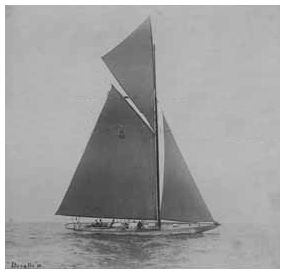 By 1908, Owen’s part-time yacht design work had developed to the point that he decided to make it his full-time occupation.
By 1908, Owen’s part-time yacht design work had developed to the point that he decided to make it his full-time occupation.
From 1907 to 1913, Owen turned out 24 yachts designed to the Universal Rule. In this period, he was also designing boats to other racing rules in Canada and the US. In 1907, Owen proposed scantling rules (construction guidelines) for wooden yachts designed to the Universal Rule. These rules were adopted by many US and Canadian clubs, until new rules were written by N. G. Herreshoff in 1928. Owen’s design successes include, 1902 WHIRL, a winner in her class even after Owen sold the boat, 1904 sloop LITTLE RHODY, winner of many ocean races; 1904 CINTHIA, restricted yawl class champion on Lake Ontario for many years; 1911 skiff-class (16') VELVET, class champion 1911/12; 1910 R-class SWARBA for Commodore RCYC and champion of class on Lake Ontario 1910; 1911 P-class PATRICIA for RCYC that defended International Fisher Cup against Herreshoff’s Seneca; 1912 P-class MAVOREEN; 1913 M-class DORELLO II, winner of class in 1913 and Eastern Yacht Club Puritan Cup 1915.
Owen’s most successful and innovative design was his N-class DORELLO in which he introduced a high aspect ratio stem head rig.  Dorello’s rig was later adapted by Herreshoff on the NYYC 50s and NYYC 40s. In 1908, Yachting magazine voted Dorello Boat of the Year. In three years of racing with Owen at the helm, this yacht won an incredible 58 of 62 races. Owen’s record of winning yachts and his technical innovations clearly establish his place in the upper echelon of designers of the day. This high reputation brought Owen his one and only contract for a J-class yacht, which unfortunately, led to a great career disappointment and transition.
Dorello’s rig was later adapted by Herreshoff on the NYYC 50s and NYYC 40s. In 1908, Yachting magazine voted Dorello Boat of the Year. In three years of racing with Owen at the helm, this yacht won an incredible 58 of 62 races. Owen’s record of winning yachts and his technical innovations clearly establish his place in the upper echelon of designers of the day. This high reputation brought Owen his one and only contract for a J-class yacht, which unfortunately, led to a great career disappointment and transition.
The story of Owen’s J-class yacht DEFIANCE is well told in Lloyd Bergeson’s 1991 article. After the disappointment of this episode, Owen changed directions.  In 1915, he accepted an invitation to become an assistant professor of naval architecture at MIT, a position he would hold until retiring as a full professor in 1941. Owen was the first professor in the department of Naval Architecture and Marine Engineering to come from a yacht design background. His most important academic legacy at MIT was introducing course work in this specialized area of naval architecture. Owen trained a generation of men who became highly successful engineers and designers in a variety of fields. Bergeson’s article cites the following names of well known yacht designers who studied under Owen at MIT: Philip L. Rhodes, Edson A. Shock, Bill McNary, Winthrop Warner, Spaulding Dunbar, Robert G. Henry, Jr., Henry A. Scheel, and Wendell Calkins. Both Burtner and Bergeson provide solid testament to Owen’s wisdom, professionalism, and skill as an inspirational educator and mentor.
In 1915, he accepted an invitation to become an assistant professor of naval architecture at MIT, a position he would hold until retiring as a full professor in 1941. Owen was the first professor in the department of Naval Architecture and Marine Engineering to come from a yacht design background. His most important academic legacy at MIT was introducing course work in this specialized area of naval architecture. Owen trained a generation of men who became highly successful engineers and designers in a variety of fields. Bergeson’s article cites the following names of well known yacht designers who studied under Owen at MIT: Philip L. Rhodes, Edson A. Shock, Bill McNary, Winthrop Warner, Spaulding Dunbar, Robert G. Henry, Jr., Henry A. Scheel, and Wendell Calkins. Both Burtner and Bergeson provide solid testament to Owen’s wisdom, professionalism, and skill as an inspirational educator and mentor.
 Like many other naval architects of his era, Owen took on commercial designs as well as yachts. Owen continued to design a few Universal Rule yachts while at MIT, but also moved on to many other vessel types. Prior to his MIT employment, he had designed a variety of power boats as well as commercial and naval vessels. His biggest commercial job was the 193' passenger and express freight Lake Ontario steamer DALHOUSIE CITY in 1910. In 1914, Owen designed EMBLANE, a 125' torpedo-testing steamer. For most of his career, Owen worked alone. It is clear, however, that other hands were at work on some of his plans. We know for example that Samuel S. Crocker worked for Owen from 1912-15. A notable exception was the Francis Minot ‘23 design partnership that resulted in the famous 142' steel Woods Hole Oceanographic Institute research vessel ATLANTIS in 1930-31, and the 130-foot North Atlantic trawlers KITTIWAK and BITTERN in 1936-37. Atlantis was the first oceanographic research vessel commissioned by WHOI. At the time, only a few vessels in the world had been purpose-designed for this work. Atlantis logged over 600,000 miles from 1931 until its retirement by WHOI in 1966. Several years ago, Atlantis was still operating in South American waters.
Like many other naval architects of his era, Owen took on commercial designs as well as yachts. Owen continued to design a few Universal Rule yachts while at MIT, but also moved on to many other vessel types. Prior to his MIT employment, he had designed a variety of power boats as well as commercial and naval vessels. His biggest commercial job was the 193' passenger and express freight Lake Ontario steamer DALHOUSIE CITY in 1910. In 1914, Owen designed EMBLANE, a 125' torpedo-testing steamer. For most of his career, Owen worked alone. It is clear, however, that other hands were at work on some of his plans. We know for example that Samuel S. Crocker worked for Owen from 1912-15. A notable exception was the Francis Minot ‘23 design partnership that resulted in the famous 142' steel Woods Hole Oceanographic Institute research vessel ATLANTIS in 1930-31, and the 130-foot North Atlantic trawlers KITTIWAK and BITTERN in 1936-37. Atlantis was the first oceanographic research vessel commissioned by WHOI. At the time, only a few vessels in the world had been purpose-designed for this work. Atlantis logged over 600,000 miles from 1931 until its retirement by WHOI in 1966. Several years ago, Atlantis was still operating in South American waters.
 After 1916, Owen became more involved with larger yachts, experimental designs, specialized commercial work, and small boats. Some notable examples are: FONTINALIS, a 68' auxiliary schooner; LYNX V; a 96' steel jib-headed staysail schooner built in Croatia (part of Italy at time of construction in 1926); ORIOLE IV, a 91' auxiliary steel ketch built for George H. Gooderham, Commodore of RCYC—after many years of private ownership gifted to Canadian Navy and still in use as an officer training ship out of British Columbia; ELSIE, a 54' yawl for Gilbert H. Grosvenor (publisher of National Geographic magazine) built at Alexander Graham Bell’s Cape Breton Island lab; RUWEIDA II, a cat-rigged “rule beater” which caused a change in the Displacement Rule; a 75' power boat designed for the sardine fishery of Lubec, Maine in 1937; and thirty 13' sailboats and a 12' rowboat built by Graves of Marblehead in 1941 for the Boston Metropolitan District Commission’s community sailing program on the Charles River.
After 1916, Owen became more involved with larger yachts, experimental designs, specialized commercial work, and small boats. Some notable examples are: FONTINALIS, a 68' auxiliary schooner; LYNX V; a 96' steel jib-headed staysail schooner built in Croatia (part of Italy at time of construction in 1926); ORIOLE IV, a 91' auxiliary steel ketch built for George H. Gooderham, Commodore of RCYC—after many years of private ownership gifted to Canadian Navy and still in use as an officer training ship out of British Columbia; ELSIE, a 54' yawl for Gilbert H. Grosvenor (publisher of National Geographic magazine) built at Alexander Graham Bell’s Cape Breton Island lab; RUWEIDA II, a cat-rigged “rule beater” which caused a change in the Displacement Rule; a 75' power boat designed for the sardine fishery of Lubec, Maine in 1937; and thirty 13' sailboats and a 12' rowboat built by Graves of Marblehead in 1941 for the Boston Metropolitan District Commission’s community sailing program on the Charles River.
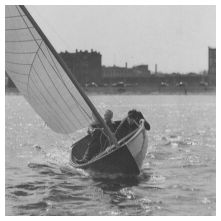 Owen’s most enduring legacy at MIT is without question the MIT Tech Dinghy and his involvement in starting up collegiate sailing. Owen was commissioned to design the first boat for organized intercollegiate sailboat racing. In 1936, MIT contracted Herreshoff Manufacturing Company to build the first 40 lapstrake MIT Tech Dinghies for $10,000. In 1952, Owen designed the first fiberglass replacements of the original fleet. The most recent new fleet was delivered to MIT in 2004.
Owen’s most enduring legacy at MIT is without question the MIT Tech Dinghy and his involvement in starting up collegiate sailing. Owen was commissioned to design the first boat for organized intercollegiate sailboat racing. In 1936, MIT contracted Herreshoff Manufacturing Company to build the first 40 lapstrake MIT Tech Dinghies for $10,000. In 1952, Owen designed the first fiberglass replacements of the original fleet. The most recent new fleet was delivered to MIT in 2004.
In his 1961 Yachting article about George Owen, Evers Burtner concluded, “George was very artistic, had a good eye…for fair hull form and a balanced sense of proportion. … [He] was rather selective in the choice of the builders of his yachts, and he took great interest in important details... Many owners of Owen’s yachts returned to him for new boats. They had individuality and quality that made them outstanding.” “…George Owen’s many admirable qualities and broad experience added up to a colorful personality which is missed by his numerous friends in his Alma Mater, his home community and in yachting.”
|
|
|
|
USEFUL LINKS
George Owen Collection - MIT Museum
- George Owen Collection: Series I: The Plans (51 pages - 784 KB) - MIT Museum
- George Owen (1877-1959) USA - Classic Sailboats
- The forgotten great designer - The People's Boat: HMCS Oriole - Google Livres
- Bernice, George Owen P Class Yacht - http://berniceonline.com
- History of Racing at RIYC (Little Rhody) - RHODE ISLAND YACHT CLUB
- Elsie (Race the Cape 2014 Flagship) | Race The Cape
 ITALIA - 1911
ITALIA - 1911 STRANGER - 1913
STRANGER - 1913 BERNICE - 1916
BERNICE - 1916 ORIOLE IV - 1921
ORIOLE IV - 1921